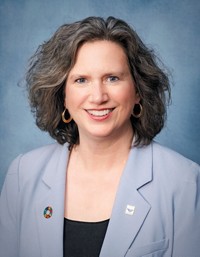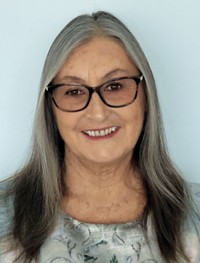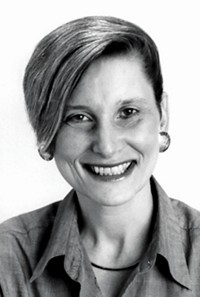Advertisement
Grab your lab coat. Let's get started
Welcome!
Welcome!
Create an account below to get 6 C&EN articles per month, receive newsletters and more - all free.
It seems this is your first time logging in online. Please enter the following information to continue.
As an ACS member you automatically get access to this site. All we need is few more details to create your reading experience.
Not you? Sign in with a different account.
Not you? Sign in with a different account.
ERROR 1
ERROR 1
ERROR 2
ERROR 2
ERROR 2
ERROR 2
ERROR 2
Password and Confirm password must match.
If you have an ACS member number, please enter it here so we can link this account to your membership. (optional)
ERROR 2
ACS values your privacy. By submitting your information, you are gaining access to C&EN and subscribing to our weekly newsletter. We use the information you provide to make your reading experience better, and we will never sell your data to third party members.
Comment
Comment: The untapped potential of ACS divisions to connect us
by Sheila Murphy, chair, Committee on Divisional Activities
April 26, 2024
| A version of this story appeared in
Volume 102, Issue 13

Looking at American Chemical Society Spring 2024 in the rearview mirror, we can see that we have many strengths and opportunities to draw upon to make our future better. As we strive to create an exciting, thriving, inclusive society, it seems appropriate to recognize the existing and untapped potential for ACS to connect us. ACS divisions will be at the very heart of this future by connecting us with each other.
The meeting in New Orleans was an invigorating gathering! Over 14,000 colleagues attended the event: 38% were first timers, and 13% were international attendees representing 77 countries. The ACS Expo was back in business as a thriving hub of activity. Our division showcase, Division Row, was joined by Local Section Row and Committee Row at the Sci-Mix poster session. Along with some strategically placed beignets and full-size candy bars, this vibrant event provided a unique chance to interact not only with attendees but also with ACS leaders, many of whom probably have not attended this 8–10 p.m. poster session in a while.
The core of the spring meeting was the technical program, with hundreds of division volunteers, program chairs, symposium organizers, and session presiders working to organize over 11,000 talks and posters. We often talk about improving the attendee experience, but ACS also has a duty to presenters, who represent our extensive, diverse community from early-career scientists to Nobel laureates and business leaders.
ACS symposia provide opportunities for presenters to showcase their work, stimulate discussion, network with other interested attendees, and develop ideas for future collaborations. The Future of Meetings (FoM) initiative has several aims, one of which is to elevate attendee and presenter experience through content and settings. With their greater emphasis on providing truly interdisciplinary sessions through joint divisional programming and an increased number of topics on emerging science, divisions play a vital role in the success of ACS meetings.
Emerging science requires a diverse skill set to make progress. Our 32 divisions are home to a wide range of disciplines. When we meet our division colleagues, we often refer to them as our family away from home. We need this family to be connected to other divisional families in order to form new interconnected communities that inspire, develop, and lead emerging science. We need our interconnectedness to move wild and exciting ideas from the paper napkin to the research bench, from research scale through pilot programs to commercialization.
The Committee on Divisional Activities (DAC) introduced a new grant, the Convergent Chemistry Communities (CCC) grant, to promote the creation of emerging communities within ACS that are not served by any other ACS unit. The idea is to provide support for multidivisional exploration of “hot” emerging science that may not sit centrally within any specific division. This grant provides you with funding to explore multidisciplinary solutions to grand challenges and societal needs. What does your division need to develop solutions to any of the United Nations sustainable development goals (SDGs)? Many of the SDG goals are at the heart of the purposes our divisions focus on. I urge you to submit a proposal for one of these grand challenges and form a community of interested scientists and professionals who can make a difference. The next deadline is June 26.
Within ACS, we have tools that can help us develop meaningful interconnections. One is the new FoM Programming Workshop. It launched in January and is a new activity that brings programming chairs together to share their ideas and see the interconnections with other divisions. ACS staff created a matrix showing all the connections between the divisions according to shared division memberships. It was a revelation to many at the workshop that so many divisions have common members—ACS members are willing to belong to several divisions. I strongly urge you not to see other divisions as competitors for memberships but as partners and extended family with overlapping interests. It is clear on paper that we are interconnected. Now we need to lower our barrier for interdivisional activities to expand our horizons for the benefit of all.
I encourage all members to explore our divisions as they are your technical or professional homes within the ACS. There is no location barrier to being a division member, and our divisions welcome our geographically diverse ACS members to join and connect.
As I finish this last Comment as DAC chair, I feel deeply that the strength and voice of ACS is our membership. Our interconnectedness makes us greater than the sum of our individual components—that is our superpower, and we should embrace it, nurture it, and thrive from it.
Views expressed are those of the author and not necessarily those of C&EN or ACS.





Join the conversation
Contact the reporter
Submit a Letter to the Editor for publication
Engage with us on Twitter